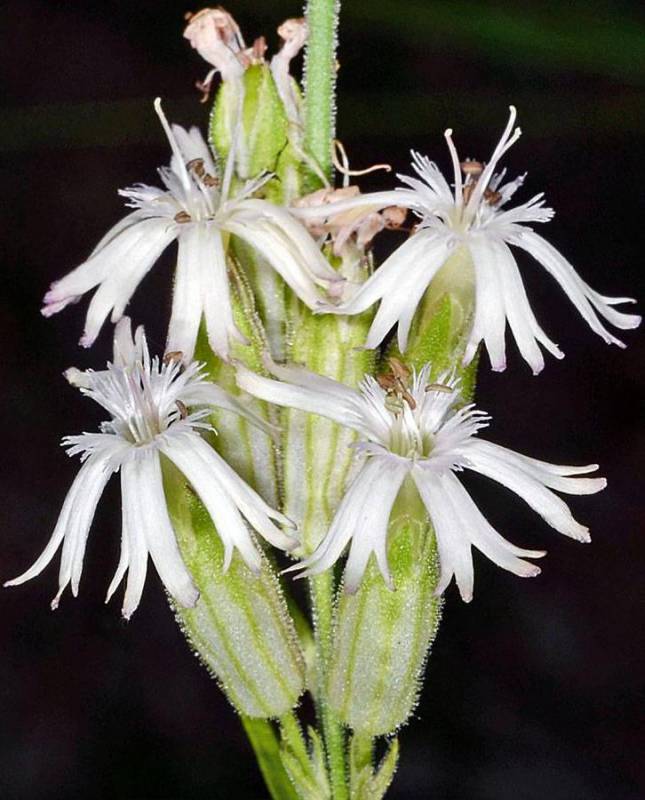Hosted by the University of Washington Herbarium, Burke Museum
Publication: Proc. Amer. Acad. Arts. 24: 82. 1889.
Origin: Native
Herbarium search: CPNWH
Notes:
FNA5: "Silene bernardina is the earliest valid name for this species. Watson had previously (1875) named it S. montana, and that name was taken up by C. L. Hitchcock and B. Maguire (1947), who cited S. bernardina as a subspecies of S. montana. Unfortunately, the epithet montana is pre-occupied in Silene by S. montana Arrondeau (1863), an unrelated European species. The situation was further complicated by Watson in 1877, when he used the name Lychnis montana for another unrelated species now transferred to Silene and called S. hitchguirei.
Silene bernardina varies in leaf width, pubescence, and flower color. The broader-leaved and more sparsely pubescent forms have been referred to subsp. bernardina, and the more-common, narrower-leaved, more-densely pubescent, and viscid forms have been referred to subsp. maguirei.
Some forms of Silene bernardina can be difficult to distinguish from S. verecunda, S. sargentii, and S. oregana. Silene verecunda differs in its smaller, clavate calyx and in its petals being only shortly two-lobed. Silene sargentii is a small, densely cespitose, high-alpine species with very narrow, linear leaves (1-2 mm wide), shortly two-lobed petals, and seeds with much larger papillae around the margins. In S. oregana the petals are larger (two times the calyx) and deeply divided into many very narrow segments; the claw and the filaments are glabrous; the leaves, particularly the basal ones, are broader; and the inflorescences are narrower, with the more numerous flowers arranged on short, ascending branches; also, the calyx lobes are ovate and obtuse instead of lanceolate and acute."
References:
Last updated 5/20/2020 by David Giblin.

